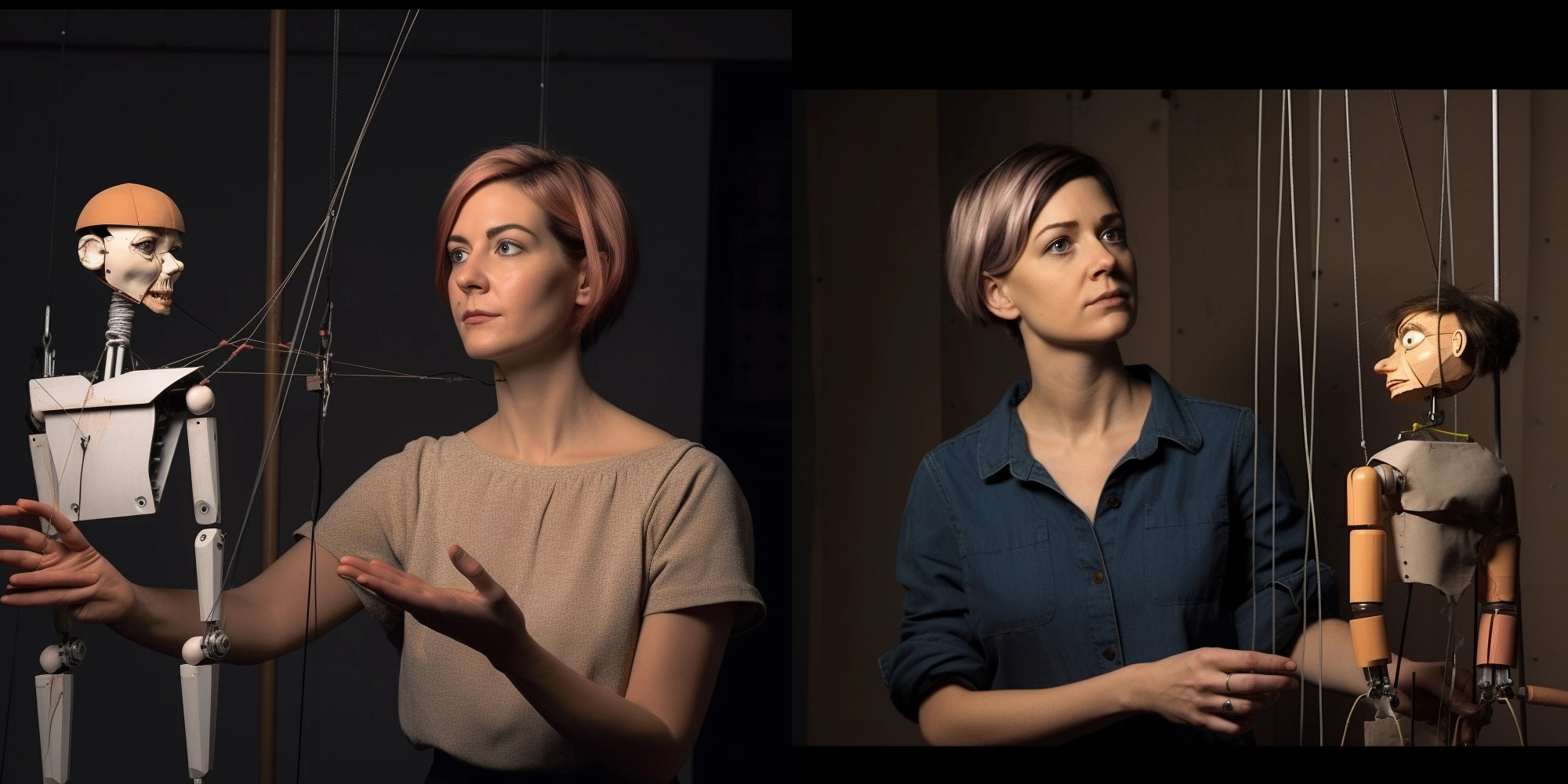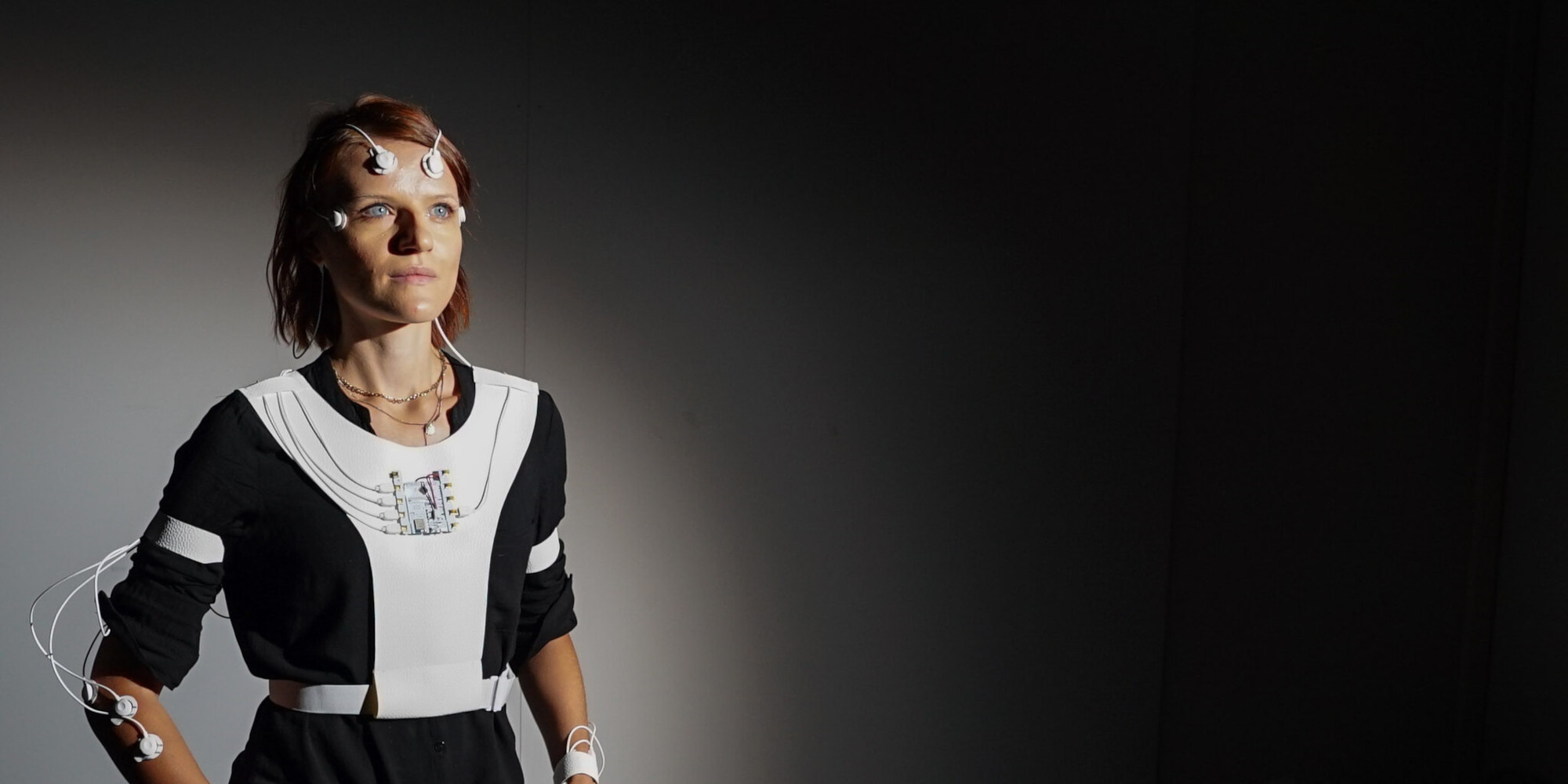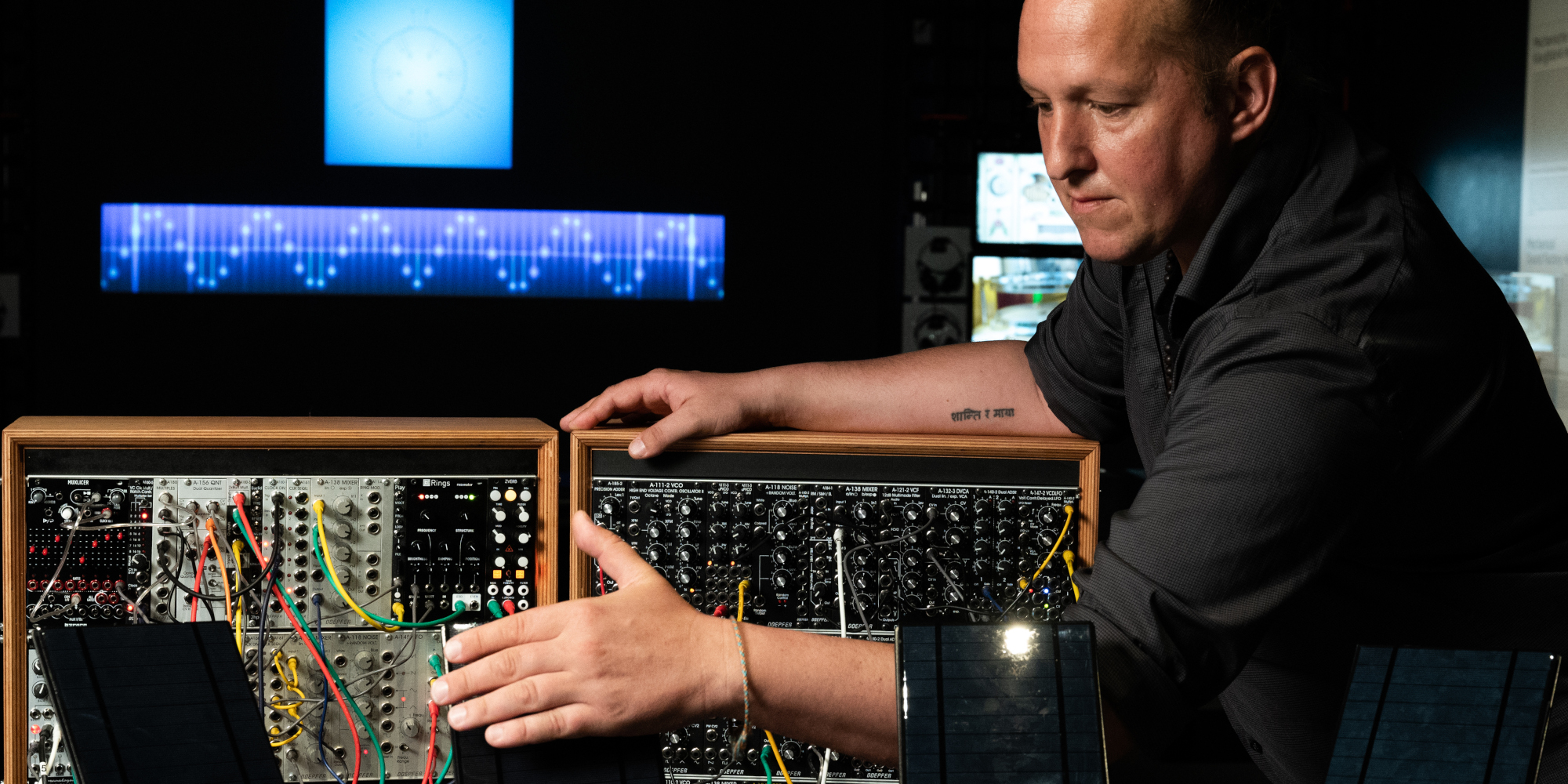It is now almost exactly four years since we reopened the Ars Electronica Center under the title “Compass – Navigating the Future”. Almost no stone was left unturned and the orientation of the Museum of the Future shifted from the telescope that opened the view into the future to the compass – a companion in the here and now. So it is only logical that now – 4 years and with the experience of a pandemic that has led to a massive digitalisation push – we “recalibrate the compass”.
The topics of Artificial Intelligence, Neuro-Bionics, Genetic Engineering and Biotechnology and the far-reaching global changes that we have already taken up in 2019 are more topical today than ever before. New technological developments in the aforementioned areas raise new questions about their impact on our everyday lives and their consequences for us as a society. More than ever, therefore, there is a need for a basic understanding of these technologies and how they work.
This is both an incentive and a mandate to address the latest developments in our exhibitions and to renew and update some of the stations from scratch. “Compass reloaded!” so to speak. On THU May 11, 2023, 6 PM, we will open the newly adapted exhibitions in the Ars Electronica Center! Navigate through the current topics of our time with the help of our newly calibrated compass and discover the newly adapted areas. We invite you to join us on an exciting journey of discovery!
We are already revealing some of the highlights to you.

Understanding Artificial Intelligence
In our main exhibition “Understanding AI”, the focus is on humans and their relationship to machines. In many installations and applications, we deal with the question of what distinguishes us humans from machines, examine how machines “think”, how they “learn” and what Artificial Intelligence actually is and what effects AI systems have on us as a society? Especially the developments in the field of machine learning and AI systems have picked up speed rapidly recently and have arrived in the middle of our everyday lives.
ChatGPT
OpenAI
Four years ago, we already showed GPT-2, a predecessor system of ChatGPT. GPT-2, the AI language model developed by the American company OpenAI, was already able to generate coherent text paragraphs at the time. Extremely impressive at the time! But with ChatGPT (GPT stands for Generative Pre-trained Transformer), the developers of Open AI 2023 have gone a big step further. ChatGPT is a prototype chatbot that works with Artificial Intelligence and can answer questions in the chat. The quality of the answers is variable – but ChatGPT seems to find an answer to everything and has triggered a real hype internationally. But what are the advantages and disadvantages of this new human-machine communication? How will it affect our lives, our everyday school and work lives? How will this technology develop in the future? These and other questions will be addressed in the newly adapted main exhibition, where our visitors can now try out ChatGPT for themselves and learn more about how this system works.
Stable Diffusion
Given the new developments in AI and machine learning, the question arises: “Can AI do art?” We would like to stimulate this debate using the AI image generator Stable Diffusion. Stable Diffusion is an image generator that can create photorealistic images based on input text descriptions.
Zeitenwende – The Almost Dead Artist: The Almost Alive Artificial Intelligence
Richard Kriesche (AT)
In this exhibition, generated with the help of ChatGPT, Richard Kriesche not only explores a current phenomenon of digital information technology that will significantly change life, but also ties in with his research on Artificial Intelligence since the 1990s. The conceptual text work inquires into a current change in the concept of art, in which artists and AI act together and thus “reveal a newly established relationship between art, artist and Artificial Intelligence” (Kriesche). This is about the understanding of art, authorship, work and knowledge, or the ultimate overcoming of the notion of “mastery” or human supremacy in a time of digitalised knowledge outsourcing. Only through collaboration will both man and machine – according to ChatGPT – evolve productively.
I, HUMAN
Saint Machine (RO)
“I, Human” is a modular media sculpture that resembles a neural network. The installation recognises visitors’ emotions and transforms their empathy into coherent light that influences the vital biological processes of microorganisms, symbolising the fragility of our planet’s ecosystem, whose survival depends on human cohesion. The interconnected modules analyse the emotions of visitors from Timișoara (Romania) and Linz (Austria) and translate their level of empathy into laser light pulses that feed a population of Euglena in a real-time bio-photonic experiment at the Centre for Advanced Laser Technologies (RO).

Neuro-Bionics
More precise measuring devices, new visualisation methods and targeted intervention in ever smaller cell structures are evidence of the rapid technological development in the field of neurology as well. The attempt to track down neurological diseases such as Alzheimer’s or to trace the great mysteries of intelligence and consciousness raises many questions – including ethical ones. The “Neuro-Bionics” exhibition, which opened in 2019, is undergoing an extensive update in the field of brain-computer interfaces. Numerous new stations give our visitors the opportunity to explore current topics ranging from neuromarketing to neuroethics and to form their own opinions.
BCI-Sensor
Ars Electronica Solutions (AT), g.tec medical engineering GmbH (AT) & Erika Mondria (AT)
In our engagement with the environment, there are both elaborate, conscious cognitive processes for forming opinions and immediate, unconscious ones. These brain activities can be recorded via a brain-computer interface. The “Unicorn Brain Interface” is a portable electroencephalography (EEG) headset that uses EEG electrodes to measure and analyse bioelectrical signals on the cerebral cortex. Relevant here are the excitation-related potentials (ERP) that occur in connection with briefly presented images. The software orders images according to the reaction of the brain waves of the test persons. The fields of application of the technology are broad and range from research to the use for assistance systems to neuromarketing.
The NeuroRight Arcades
Roel Heremans (BE)
Innovation in neuro-wearables and brain-computer interfaces is advancing faster than the social and ethical frameworks surrounding them.
Researchers at Columbia University have therefore developed five “NeuroRights” (mental privacy, personal identity, freedom of will, equal access to mental augmentation and protection from algorithmic bias). Inspired by these “NeuroRights”, Roel Heremans and his team developed an interactive installation, an arcade machine, to make each of these “NeuroRights” tangible and to give visitors the opportunity to explore unanswered questions about the ethical future of neurotechnology. Visitors will wear a BCI headset and be guided through an aesthetic experience at the installation. In doing so, the team hopes to evoke a visceral response so that participants can recognise the need for “NeuroRights” on a personal level. Upon request, visitors receive a digital printout of their recorded brain waves, which can be downloaded via QR code. Just when you thought you had been ethically empowered, you might come to the uncanny realisation that the installation has done exactly what it warned you about …
Future Ink
Life Ink / Bio Ink / AI Ink / Space Ink
“Future Ink” is a joint research project between Wacom, the world’s leading provider of graphics tablets, interactive pen displays and digital interface technologies, and the Ars Electronica Futurelab. Launched in 2020, the research project aims to explore the creative potential of ink as a means of expression from a variety of angles and to explore the future of creativity through prototypes (Bio Ink / AI Ink / Space Ink). The latest development, first presented in 2022, is Life Ink. This is about the concept of “creative spark” and the question: can the human mind and body become the pen from which our emotions and creativity flow like ink? To capture brain waves and body signals in real time, the research team developed devices that can be worn on the head and body. Based on the live data transmitted by the sensors, a new type of ink, called life ink, is being developed.

AI x Music
“AI x Music” is an exhibition about the encounter of Artificial Intelligence and music and about the meeting of human creativity and technical innovation.
Solar Synthesizer 0.4
Klaus Dieterstorfer (AT), Alex Minichmair (AT), Rupert Huber (AT), Felix Minichmair (AT)
In view of the challenges posed by the climate crisis and the dream of an energy-independent life, Klaus Dieterstorfer and his team explored the question of how electronic music can be played in an energy-autonomous way. The “Solar Synthesizer 0.4” is the first attempt to produce sounds with the energy of the sun. In this way, electronic music can be played energy-autonomously for the first time. When completely irradiated by the sun or another light source, a harmonic soundscape is created that changes as soon as a person stands between the sun and the photovoltaic cells. Instead of pressing keys, one moves the hand towards or away from the panel.
Being
Rashaad Newsome (US)
“Being” (2022) is a social humanoid AI developed through a combination of 3D animation, game engines, scripted responses, generative grammars and specialised machine learning models. “Being” acts in a variety of roles, leading participatory workshops on decolonisation, has also acted as a tour guide in one of Newsome’s exhibitions, and continuously writes and recites poetry inspired by the work of queer poet Dazié Rustin Grego-Sykes and accompanied by an ASMR soundscape.
Winner of the Prix Ars Electronica 2022 Golden Nica in the Computer Animation category for “Being”, artist Rashaad Newsome brings together a wide range of artistic practices in his work. He draws from the world of advertising, the internet, art history, black and queer culture.
On Thursday, May 11, 2023 at 6 PM, we cordially invite you to the opening of Compass reloaded! Navigating the Future!
